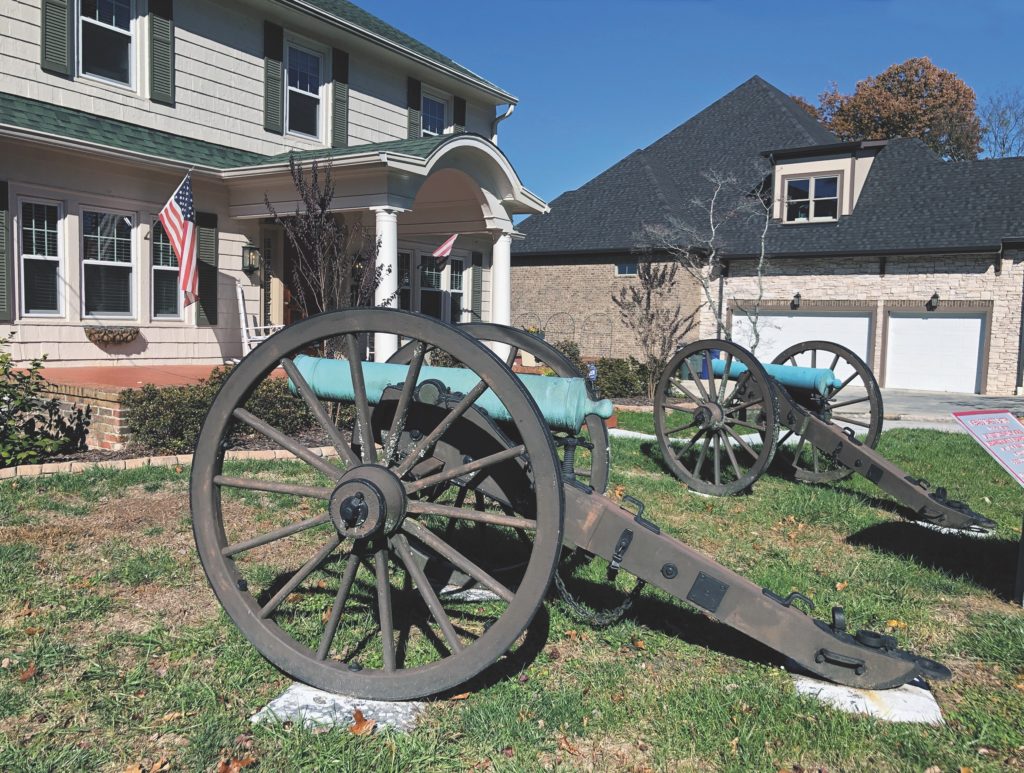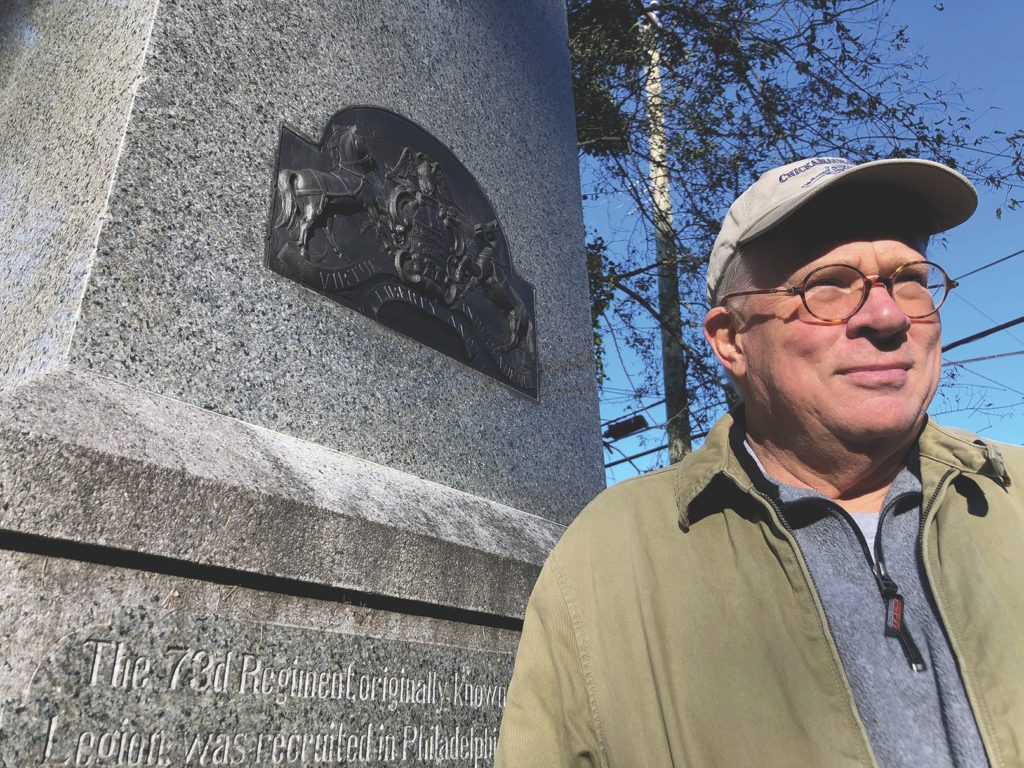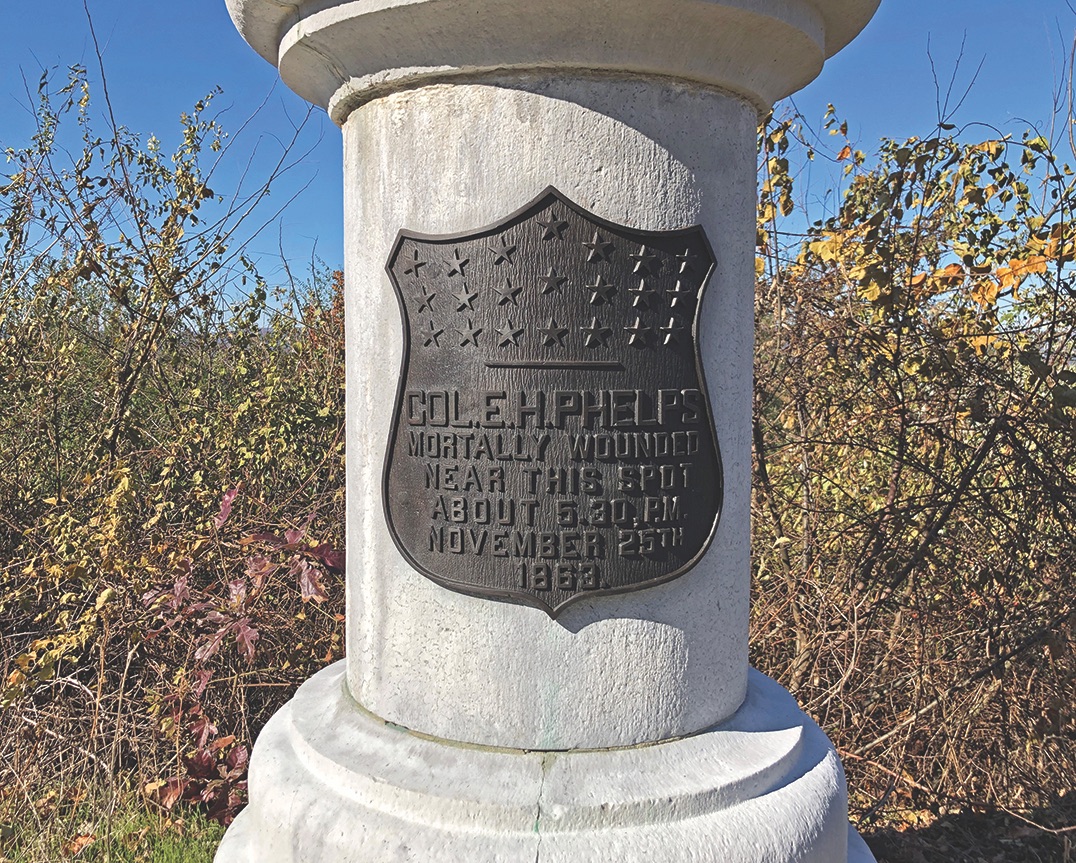Magnificent views of the city below created a real estate bonanza
On a chilly Saturday morning, with a three-quarter moon lingering in a deep-blue sky, Sam Elliott and I stand atop Orchard Knob, site of Maj. Gen. Ulysses Grant’s headquarters during the Battle of Missionary Ridge. To our right, in the far distance, rises majestic Lookout Mountain. In front of us, about a mile away, rises its smaller cousin, Missionary Ridge.
As we discuss this pivotal battle, our only other companions are triumphant soldier figures atop Union monuments that dot this small hill in a working-class neighborhood in east Chattanooga, Tenn. It’s not surprising, Elliott, a Chattanooga attorney and historian, tells me. Despite the parklike setting, most locals avoid this historic ground, considering it more a cemetery than a recreational area.
My objective is to explore the distant ridge, where hundreds of stories lurk. Unlike the improbable but wildly successful assault by 54,000 Federals on November 25, 1863, a day after the Union Army’s capture of Lookout Mountain, our journey is far less taxing; we must merely navigate traffic instead of dodge Confederate fire from atop Missionary Ridge. Mostly farmland in 1863, the approach to Rebel positions was long ago ravaged by developers.
This is the story of the Missionary Ridge visit—it’s about how the 19th and 21st centuries co-exist in Chattanooga.
And bones. Lots of bones.

From its northern tip to a southern edge that sneaks into Georgia, the Missionary Ridge battlefield is roughly seven miles long. Massive chunks are missing in places in the ridge, Elliott says, as if scooped out like ice cream. In the 1950s, a quarter-mile section of the ridge was blasted away for construction of U.S. Interstate 24.
Some of the natural ravines provided ideal cover for Yankee advances to the crest of Missionary Ridge, thinly defended by about 45,000 Confederates commanded by 46-year-old Braxton Bragg. The ridge is stunningly steep in places, begging the question: “What the heck were the Federals thinking?” Union losses at Missionary Ridge were 5,824 (753 killed, 4,722 wounded, and 349 missing). Confederate casualties are believed to be about 6,700 (361 killed, 2,160 wounded and nearly 4,200 missing, mostly prisoners.)
In 1890, Congress authorized the creation of the Chickamauga & Chattanooga National Military Park—the first, and still largest, such park protected by the U.S. government. Beginning in the late-19th century, monuments commemorating Union sacrifice were dedicated on Missionary Ridge, and cast-iron plaques were placed denoting positions of the armies. Along the crest, seven “reservations” covering key areas of the battle are maintained by the National Park Service, which preserves and tells the story of the epic assault.
As Chattanooga expanded, a residential neighborhood sprouted atop the ridge, unsurprising given the magnificent view of the city and valley below. It’s an odd scene today: In a tony neighborhood on winding, two-lane Crest Road, a cannon denoting a Confederate battery position points into a 20th-century house; historical plaques stand steps from houses and driveways; and monuments appear in front yards. All the markers, monuments, and cannons are owned and protected by the National Park Service.
Yards from the front door of an impressive house on Crest Road, stands an isolated upright cannon tube. Few stop to examine the monument to Edward Phelps, the Union 3rd Brigade commander who was mortally wounded here 156 years ago. It’s no wonder: Parking is scarce all along the narrow road.
On the afternoon of November 25, the 34-year-old colonel led men from Ohio, Indiana, and Kentucky up Missionary Ridge. Their objective: Push the enemy from defenses bristling with artillery.
“Those in front would be the safest, so we all ran our best, as it was almost certain death to be slow and behind,” Lawrence Gates, a lieutenant in the 74th Indiana, wrote of the assault days after the battle. “The voice of the five cannons, which fired upon us, the bursting of shells in our ranks and over our heads, and the loud hurrah and yell of our brave boys with the occasional war cry: ‘Chickamauga’ nearly deafened my ears.”
Weakened by illness and unable to ride his horse, Phelps, according to a postwar account, was carried up the ridge by four soldiers. “We were completely tired out when near its top,” Gates recalled, “but the gallant ‘Phelps’ was with us, and when he commanded: ‘Fix Bayonets! Forward Boys! Charge!’ it was done with a will.”
In the assault, Gates’ regiment suffered low casualties: 18 soldiers killed or wounded. But Phelps, a lawyer, was mortally wounded in the chest. His remains were returned to his grieving wife in Toledo, Ohio, where he received a military funeral—another victim of the “mad ambition of reckless traitors,” according to the local newspaper.
“Lookie here! Lookie here!” says Elliott, pointing to one of the “ice cream scoops”—a route Yankees took when they advanced up the ridge. We drive north on Crest Road, passing a historical marker in the corner of a front yard denoting ground defended by Confederates under Maj. Gen. William H.T. Walker. Then we slowly pass a ranch house with one of those Missionary Ridge oddities: In the front yard, 25 or so paces from the front door, a cannon marks the nearby position of an Arkansas battery. One of the residents sometimes lets her grandchildren play on the cool lawn ornament. (The NPS has occasionally told residents to remove holiday lights from cannons during Christmas season.)
At the corner of Glass and Campbell streets, Elliott and I stand in the Pennsylvania Reservation, near the 73rd Pennsylvania monument. Above us rises now-heavily wooded Tunnel Hill, vigorously defended by veterans under Confederate Maj. Gen. Patrick Cleburne. In 1863, ground below the hill was part of the Glass Farm; now it’s covered with mostly older, 20th-century homes and bears no resemblance to its war-time appearance.

On the afternoon of November 25, 143rd New York Lt. Col. Joseph Taft, temporarily in command of the 73rd Pennsylvania, led a charge up Tunnel Hill. Examining the steep terrain, Elliott and I marvel at the audaciousness of the assault. “Crazy,” he calls it.
Taft, born in Mississippi in 1838, was working in his Massachusetts-born father’s bookstore in Houston, Texas, when the Lone Star State seceded in February 1861. Both were opposed to secession; Taft eventually made his way to New York, where he became a major in the 143rd New York.
A “thorough disciplinarian and a model soldier,” the red-headed Taft was killed during the Missionary Ridge attack. “‘For God’s sake hold the position” reportedly were his last words. The 25-year-old officer is buried in Chattanooga National Cemetery, about four miles from where he died.
From his Crest Road house, 67-year-old retiree Doug Eckert has a bird’s-eye view of history. In his front yard, a large plaque denotes the position of Confederate Maj. Gen. Thomas Hindman’s Division. Across the road, Missionary Ridge drops off precipitously.
“On any given Sunday,” says Eckert, the former president of the neighborhood association, “someone with out-of-state license plates will slow down and take pictures of that cast-iron plaque in the front yard. They may not know what took place here. But I’m sure they try to imagine 1863.”
Retreating Rebels probably fled through Eckert’s yard. In 2017, Eckert found a musket ball on the ground near the birdbath in his front yard. His next-door neighbor found a Minié ball in a crevice in his driveway.
Neal Thompson, a neighborhood resident since 1958, lives on the most unusual property on Missionary Ridge. Two cannons in the front yard of his home mark the position of Confederate Captain John Mebane’s battery. One of the bronze tubes, yards from the front porch of Thompson’s 1922 house, points directly between his door and front window. “Doesn’t bother me a bit,” he says of the artillery piece, a popular target of photographers.
The 70-year-old attorney rattles off history like a caffeinated auctioneer. Thompson is a distant relative of Andrew Jackson, the 7th U.S. president. His ancestors in the 5th Tennessee, part of Brig. Gen. Otho Strahl’s Brigade, defended the southern end of Missionary Ridge, about 1.25 miles south of his house. Another, a captain in the 6th Georgia, was killed at Antietam.
After an ice storm in 1960, Thompson says, work crews broke their chainsaws on Civil War lead and iron encased within toppled limbs and trees. In 1988, a friend of Thompson’s discovered a cannonball embedded in an oak on his ridge property. He tells of the discoveries of scores of battle artifacts in the neighborhood and on his property—pieces of skillet, grapeshot, bullets, horseshoes.
Across Crest Road, where Thompson owned another home, he believes Confederates kept their artillery horses. “This yard,” he says as we walk those grounds, “is full of metal.”
And then there are the grisly finds. In 1961, when he was 12, Thompson was at the McCallie School, a private prep school below Missionary Ridge, when the remains of a Yankee soldier were found there. “I saw the bones myself,” he says of the find on the old Rev. Thomas Hooke McCallie property. “The skull, too.” The body had first been unearthed in 1879 and reburied on the spot. Periodically over the years, bones of other soldiers have been uncovered, too.
Who knows what other secrets will someday be revealed in this unusual neighborhood on a Tennessee ridge?
John Banks is the author of the popular John Banks’ Civil War blog. This story appeared in the April 2020 issue of Civil War Times.





